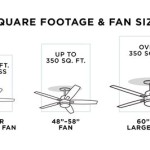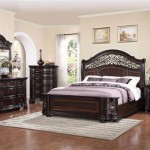Sofa Beds for Small Bedrooms: Maximizing Space and Functionality
In the realm of interior design, particularly for compact living spaces, the efficient use of square footage is paramount. A popular and versatile solution for small bedrooms is the sofa bed, also known as a sleeper sofa or pull-out couch. This hybrid furniture piece seamlessly combines the comfort of a sofa with the functionality of a bed, offering a practical and aesthetically pleasing answer to space constraints. This article delves into the advantages, types, considerations, and selection process of sofa beds tailored for small bedrooms.
The primary benefit of a sofa bed in a small bedroom is its dual functionality. During the day, it serves as a comfortable seating area for relaxing, reading, or entertaining guests. When needed, it can be easily converted into a bed, providing a sleeping space for visitors or serving as a primary bed in a studio apartment. This adaptive nature makes sofa beds invaluable in situations where maximizing space is essential.
Beyond space saving, sofa beds can contribute significantly to the overall aesthetic of a small bedroom. Modern designs offer a wide range of styles, from minimalist and contemporary to classic and traditional. This allows individuals to select a sofa bed that complements their existing décor and personal taste, ensuring that the furniture piece not only fulfills a practical need but also enhances the room's visual appeal.
Understanding Different Types of Sofa Beds
The market offers diverse types of sofa beds, each with its own mechanism, design, and advantages. Understanding these variations is crucial for making an informed decision based on individual needs and preferences.
Pull-Out Sofa Beds: These are perhaps the most common type. They feature a mattress that is folded and stored inside the sofa frame. When converted, the mattress is pulled out and unfolded to create a sleeping surface. Pull-out sofa beds typically offer a more traditional mattress experience compared to other types, making them a suitable option for those who prioritize sleep comfort.
Click-Clack Sofa Beds: Also known as futons, click-clack sofa beds feature a backrest that can be reclined to a horizontal position, transforming the sofa into a flat sleeping surface. The mechanism usually involves a "click-clack" sound as the backrest is adjusted. These sofa beds are generally more affordable than pull-out models and offer a straightforward conversion process. However, the mattress may be thinner and less comfortable than a traditional mattress.
Sleeper Chairs: As the name suggests, these are armchairs that can be converted into single beds. They are ideal for very small bedrooms or for situations where only an occasional sleeping space is needed. Sleeper chairs are typically compact and easy to move around, offering flexibility in room arrangement.
Daybeds: Daybeds combine the functionality of a sofa and a bed in a single piece of furniture. They typically have a backrest and armrests on three sides, creating a sofa-like appearance. Daybeds can be used as a seating area during the day and as a bed at night without requiring any conversion. They are a stylish option for small bedrooms and can be customized with cushions and throws to enhance comfort and aesthetic appeal.
Key Considerations When Choosing a Sofa Bed for a Small Bedroom
Selecting the right sofa bed for a small bedroom requires careful consideration of several factors. These factors include size, comfort, mechanism, style, and budget. Failing to address these aspects can result in a purchase that does not adequately meet the user's needs or integrate seamlessly into the space.
Size and Dimensions: Measuring the available space in the bedroom is paramount. It is essential to consider both the sofa's dimensions in its closed position and the footprint it will occupy when converted into a bed. Account for any obstructions, such as doorways, windows, or furniture, that may hinder the placement or operation of the sofa bed. Opting for a sofa bed that is proportionally sized to the room will prevent it from overwhelming the space.
Comfort and Mattress Quality: The comfort of a sofa bed is a critical factor, especially if it will be used for regular sleeping. Evaluating the mattress quality is essential. Consider the mattress type (e.g., innerspring, memory foam, latex) and its thickness. Thicker mattresses generally provide better support and comfort. If possible, test the sofa bed in both its sofa and bed configurations to assess its overall comfort level. Some sofa beds allow for the addition of a mattress topper to enhance comfort.
Conversion Mechanism: The ease of converting the sofa into a bed and vice versa is an important consideration. A smooth and effortless mechanism will encourage more frequent use. Test the conversion process to ensure that it is manageable and does not require excessive force or time. Consider the durability and reliability of the mechanism, as it will be subject to repeated use. Look for models with sturdy construction and well-engineered mechanisms.
Style and Aesthetics: The sofa bed should complement the existing décor of the bedroom. Consider the style, color, and upholstery of the sofa bed. Choose a design that aligns with the overall aesthetic of the room. Neutral colors and clean lines tend to be versatile and can easily integrate into various design schemes. Consider the texture and durability of the upholstery, especially if the sofa bed will be subjected to frequent use or potential spills.
Budget: Sofa beds are available at a wide range of price points. Establish a budget before starting the search. While it is tempting to opt for the cheapest option, it is important to prioritize quality and durability. Investing in a higher-quality sofa bed will likely result in a more comfortable and long-lasting product. Consider the long-term cost of ownership, including potential repairs or replacements.
Optimizing the Placement of a Sofa Bed in a Small Bedroom
Strategic placement of a sofa bed within a small bedroom is crucial for maximizing both space and functionality. Careful consideration of the room's layout and traffic flow can significantly enhance the usability of the space.
Against a Wall: Placing the sofa bed against a wall is a common and often effective strategy for small bedrooms. This frees up floor space and creates a more open feel in the room. Consider the placement of windows and doorways when determining the optimal wall for the sofa bed. Avoid blocking natural light or creating obstacles to movement.
In a Corner: Positioning the sofa bed in a corner can create a cozy and inviting seating area during the day. In this placement, ensure adequate space for conversion into a bed. This may involve rearranging other furniture in the room temporarily when the sofa bed is in its bed configuration. The corner placement can also help to define a distinct seating zone within the bedroom.
Using as a Room Divider: In larger studio apartments or open-plan bedrooms, a sofa bed can be used as a room divider. This can help to separate the sleeping area from the living area, creating a more defined and functional space. When using a sofa bed as a room divider, consider its height and back design to ensure that it provides adequate visual separation without obstructing light or airflow.
Optimizing Space Around the Sofa Bed: Even with a strategically placed sofa bed, it is essential to optimize the surrounding space. Consider using multifunctional furniture, such as coffee tables with built-in storage or side tables with drawers, to minimize clutter and maximize storage capacity. Vertical storage solutions, such as bookshelves or wall-mounted cabinets, can also help to free up floor space. Regularly decluttering the room will further enhance its spaciousness and functionality.
Lighting Considerations: Proper lighting is essential for creating a comfortable and functional small bedroom with a sofa bed. Incorporate a combination of ambient, task, and accent lighting to suit different activities. A floor lamp or table lamp placed near the sofa bed can provide adequate lighting for reading or other tasks. Consider using dimmer switches to adjust the lighting to different moods and activities. Natural light should be maximized whenever possible. Avoid using heavy curtains that block natural light.
Selecting and integrating a sofa bed into a small bedroom requires a balanced approach, carefully considering factors from the type of mechanism to the placement within the room. By understanding the nuances of different sofa bed designs and prioritizing both comfort and practicality, individuals can transform limited spaces into havens of versatility and style. The key lies in thoughtful planning and a mindful selection process, ensuring that the chosen sofa bed serves as a functional and aesthetically pleasing addition to the small bedroom environment.

The Best Sofa Beds For Small Spaces Rooms Sofabed Co

Our Favourite Compact Sofa Beds For Cosy Spaces Dreams Inspiration

7 Space Saving Sofa Bed Designs For Small

12 Of The Best Minimalist Sofa Beds For Small Spaces

12 Of The Best Minimalist Sofa Beds For Small Spaces

Clever Sofa Bed Ideas For Small Spaces Houzz Ie

The Best Modern Sofa Beds For Small Spaces Articulate Sofas Bed Couches

7 Space Saving Sofa Bed Designs For Small

Super Smart Sofa Beds For Small Spaces

9 Affordable Folding Sofa Beds For Small Spaces Godownsize Bed
See Also








